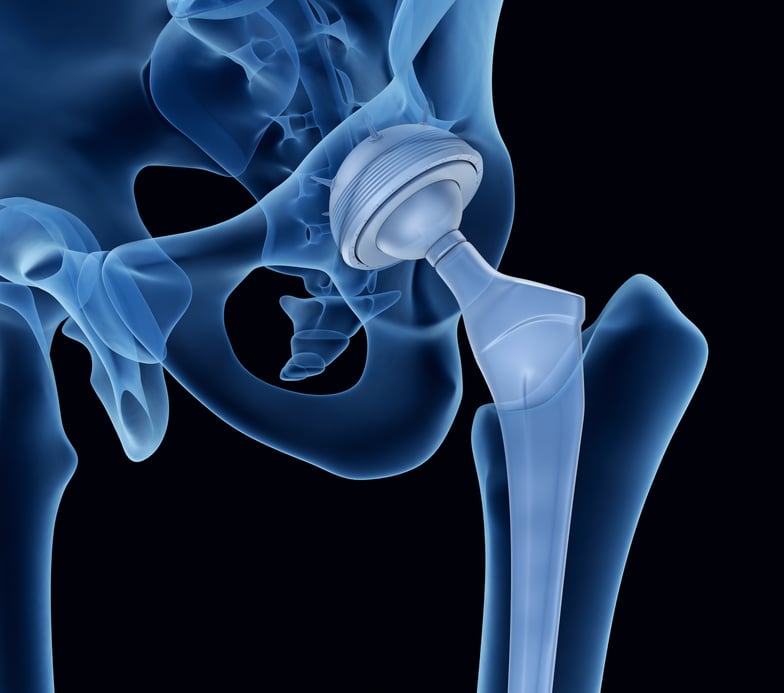 By E. Matthew Heinrich, M.D. • January 25, 2018
By E. Matthew Heinrich, M.D. • January 25, 2018
Understanding The Anterior Approach to Hip Replacement
Understanding the Anterior Approach
Hip replacement surgery has become more common in recent years, partly due to a population that’s increasingly more physically active as they age. While many surgeons use the posterior approach to hip replacement, Dr. Dodgin and I specialize in the anterior approach, using techniques that can result in less tissue damage and a faster - and more comfortable - recovery.
Anterior Approach vs. Posterior Approach
One of the key differences between the anterior approach and “traditional” posterior hip replacement surgery is the location of the incision. In posterior hip replacement surgery, the incision is made in the back (or posterior) of the hip, which makes it necessary to cut through major muscles in order to access the joint. During recovery, these muscles must be given plenty of time to heal before the joint can be used in any meaningful way. That means you may be off your feet for a longer period of time, and you may potentially also have more discomfort while the area heals.
In anterior hip replacement surgery, the incision is made along the front or anterior aspect of the hip, which means that instead of cutting through the muscles, they can be moved aside. This key feature of the anterior approach for total hip replacement surgery means that for patients who are good candidates, post-op recovery may be faster and more comfortable, and it can potentially enable patients to be able to return to regular activities faster than they could with a traditional hip replacement surgery.
At Muve Lakeway, the anterior approach to hip replacement is just one factor that can contribute to optimal outcomes in total hip replacement patients. Dr. Dodgin and I also rely on several other technological advances designed to improve your surgical experience and your long-term outcome, beginning even before you reach the operating room.
The Hip Joint Fitting Process
A successful hip replacement procedure begins with proper sizing of the prosthetic. A hip joint prosthesis comprises two main parts: a cup-shaped part that’s placed inside the acetabulum (the hip socket) and a ball portion that replaces the damaged end of the thigh bone (a portion of the bone called the femoral head). The ball is attached to a short stem that’s designed to fit snugly inside the femur. During a total hip surgery, both the acetabulum and the femoral head are replaced. At Muve Lakeway, we use custom sizing techniques designed to obtain accurate measurements of your hip so your components fit snugly and securely and move with ease. Optimal fit contributes to a faster recovery as well as better long-term results and a much lower risk of needing a revision surgery.
The Hana® Table
A second technological advance we employ is the Hana® table. Designed specifically for anterior hip replacement surgery, the Hana® table is “split” in the middle, and each “leg portion” of the table can be moved independently to rotate and position the leg to make it easier to access the joint. Once you’re positioned on the table, the procedure begins with an incision on the anterior surface of the hip. The muscles are gently moved to one side, exposing the joint so it can be replaced without cutting through any muscles around the hip joint.
Computer Assistance
With any type of joint replacement surgery, accuracy and precision are key, and like many types of surgery, hip replacement can benefit from computer-assisted techniques aimed at improving both accuracy and precision. At Muve Lakeway, we use a surgical computer “navigation” system to provide continual feedback about your hip joint throughout your surgery. The system uses special sensors that are attached to your body at the beginning of the procedure to gather information about your hip. Before your surgery begins, your surgeon will move your hip in specific ways while the sensors record data about those movements.
Taken together, the data creates a “registration” of your hip that enables the computer to develop an accurate model of the joint, including anatomical information and measurements that are unique to you. While the computer doesn’t replace the skills of the surgeon, it can greatly enhance your results by providing a steady stream of “real-time” information to assist in the proper placement of the implant components.
The Importance of Choosing an Experienced Surgeon
One final point: The anterior approach to hip replacement surgery can offer advantages for patients who are good candidates, but not every surgeon has the skills and expertise to help ensure the most successful outcome.
As two of the earliest adopters of the anterior approach for hip replacement, Dr. Dodgin and I have been performing the technique since its introduction here in the U.S., and during the intervening years, we’ve amassed significant experience in performing successful surgeries and helping patients recover faster and more comfortably.
As with any surgery, deciding to have total hip replacement surgery is a big decision and there is no one-size-fits-all solution. It is important to consult with your physician on the best course of treatment to provide optimal results for your unique needs and lifestyle, including whether or not the anterior approach is the right choice for you.
To learn more about Muve Lakeway and the Muve Health program, visit MuveHealth.com or visit our Muve Locations page.
*Professional Services are provided by independent physicians and not by Muve Health.
This blog post is not intended to be a substitute for professional medical advice, diagnosis, or treatment. Always seek the advice of your physician or other qualified health provider with any questions you may have regarding a medical condition.



